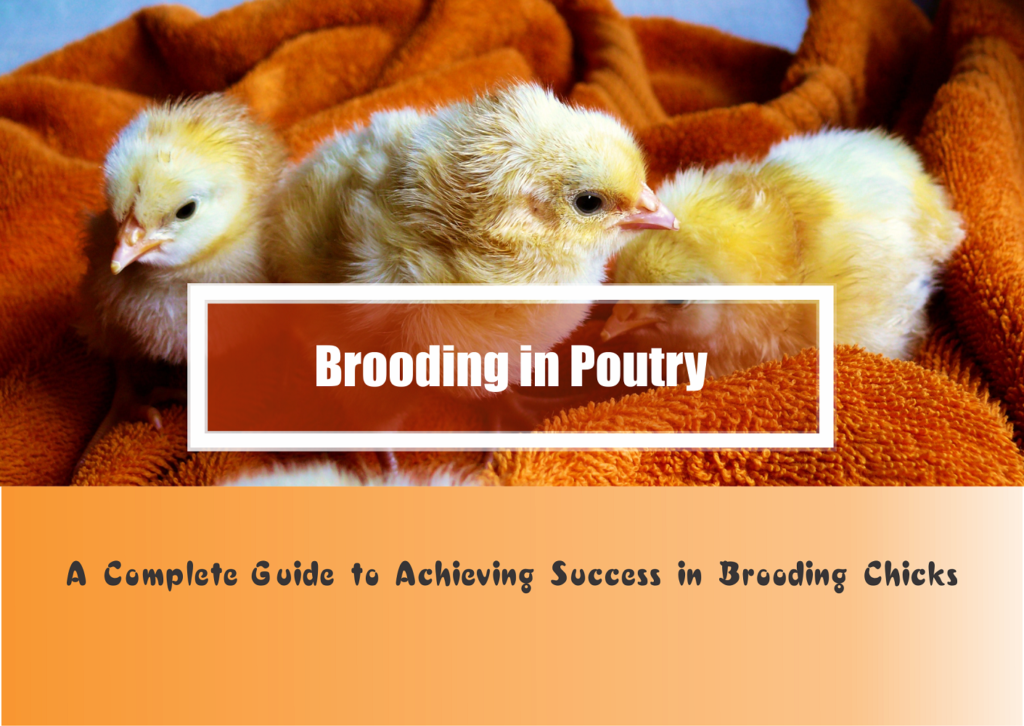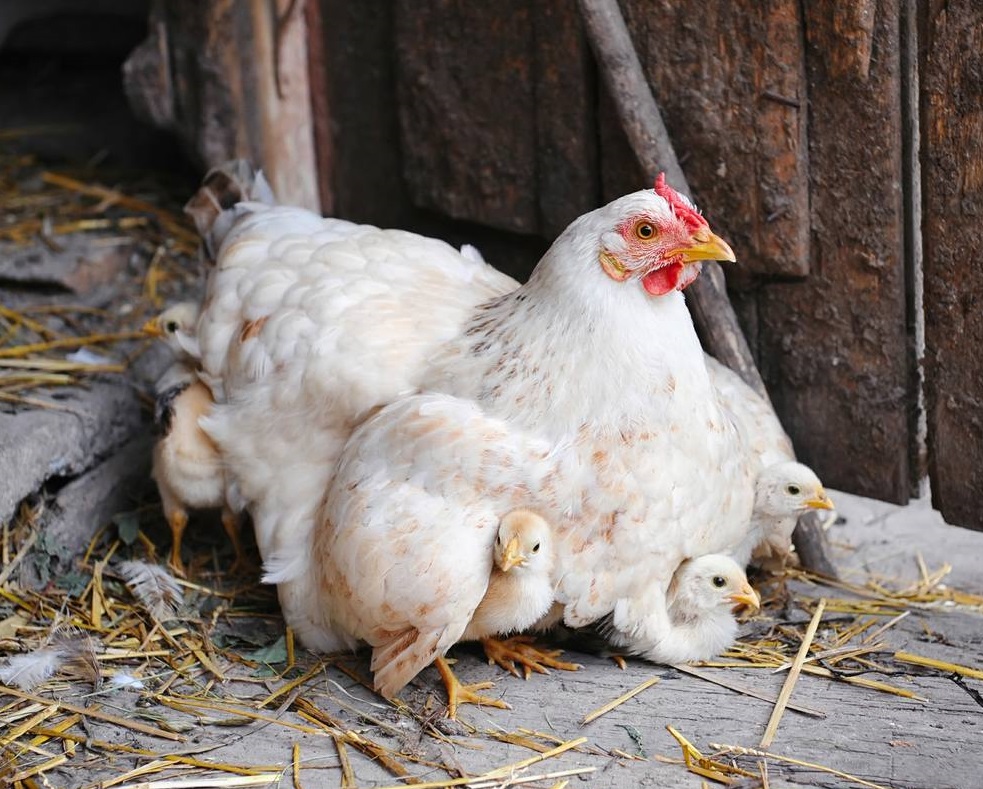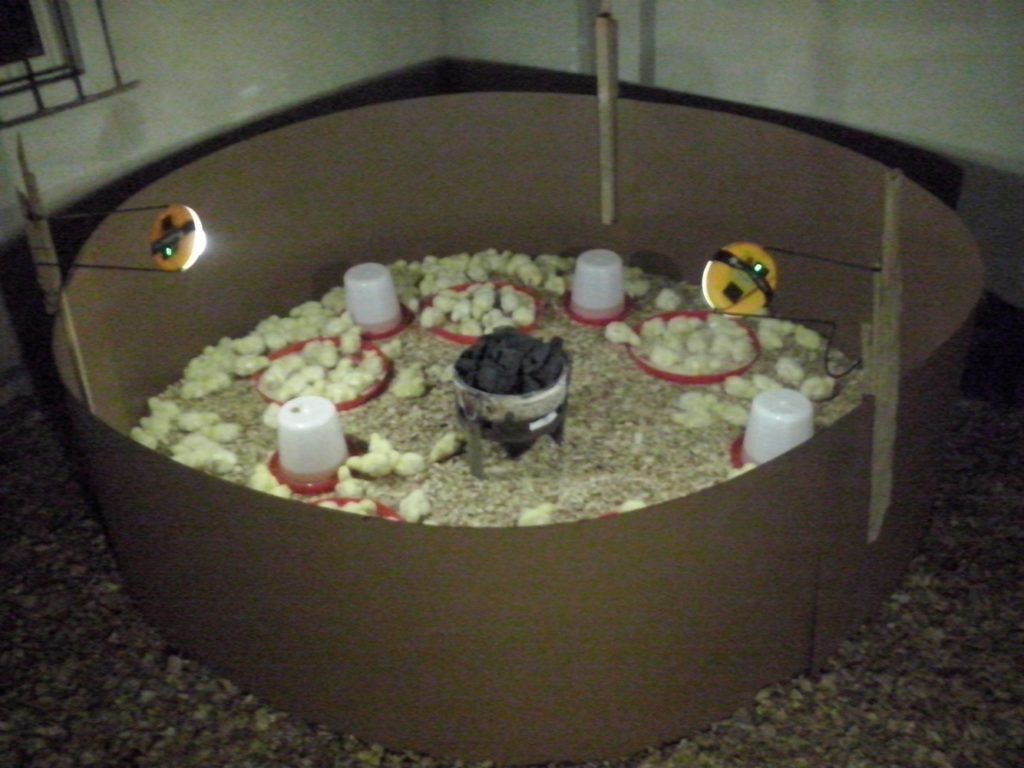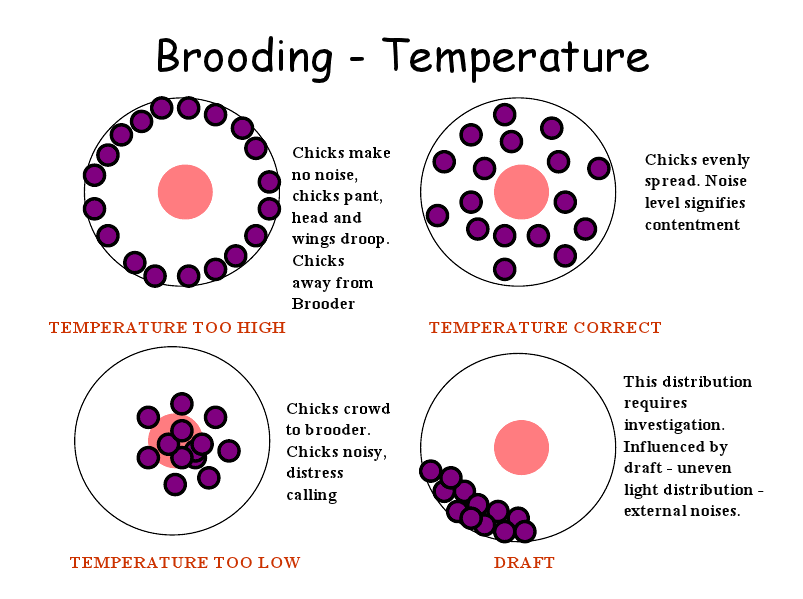Complete Guide to Successful Brooding in Poultry

My experience as a poultry farmer has proven to me that brooding is one of the most important and delicate aspect in the life of a chicken, turkey or any other poultry/bird. This guide will make you a master brooder and answer all your questions. We will consider what is brooding? what is brooder? what is brooder guard? and much more.
- Advertisement -
Less I forget, brooding is one of the things I do best. I have a track record of brooding tens of thousand of birds at a time so you are sure to gain a lot from this guide. Let’s start right away!
- Advertisement -
Table of Contents
What is brooding?
Brooding in poultry is the process of providing heat, food, water, and every necessary medical attention to poultry from a day old to about 2 – 4 weeks of age. Usually, brooding can be done by the mother hen or by humans, which leads us to the next thing – types of brooding
Types of Brooding in poultry
- Natural brooding: This is done by the mother hen. After a hen has laid a couple of eggs, usually between 8-15, she goes broody. What is broody? It is a psychologically controlled process where a hen begins to sit on her eggs with the aim of hatching them. After the eggs are hatched, the mother hen provides all the necessary condition for her chicks’ survival, especially heat, feed and water. This is natural brooding.
- Artificial brooding: In artificial brooding, a farmer tries to simulate the natural brooding process by providing everything the mother hen could have provided. Therefore, artificial brooding involves providing heat, water, feed, and necessary veterinary attention to newly hatched chicks until they are able to regulate their body temperature.


Brooding in poultry is mostly artificial because of the economic benefits.
Economic Benefits of Artificial Brooding in Poultry Management
- Artificial brooding allows the farmer to brood a large number of chicks at a time. Ranging from several hundreds to thousands.
- Artificial brooding allows for optimum performance of the chicks
- Chicks get the nutrients required through effective feeding practices
- Hens are used for brooder stock, and they lay more eggs instead of sitting on their eggs
- This is the only method that is suitable for commercial poultry production
- It allows for close monitoring of day old chicks
- It provides employment opportunity
What is brooder?
To answer the question of what is a brooder, I will keep it simple. In clear and simple terms, a brooder is a poultry house fitted with heating equipment that allows a farmer to deliver controlled heating to the chicks. Other parameters that must be considered in a brooder house include ventilation/air circulation, relative humidity, lighting, space required, safety of the chicks, etc.
Basic components of a brooder house
1. Heat Source for brooding in poultry
There are a couple of heat sources that you can use for brooding in poultry mnagement. The popular ones include:
- Gas Brooder: The is the second commonest heating source used by Nigerian farmers. It comprises of a gas heater that is powered by any cooking gas methane or LPG (propane and/or butane). The gas burner is usually covered with a layer of stainless steel to further distribute the heat
- Charcoal: This heat source involves the burning of charcoal in a coal pot. The coal pot can be made of iron or clay.
- Electric brooder: The electric brooder replaces the gas brooder where there is electricity. Apart from metered electricity bill involved, this is the cheapest.
ALSO READ: Gas Brooder VS Charcoal – You were wrong about your choice
2. Brooder Guard
Heat is a major component of brooding in poultry, hence, the need to conserve heat generated. This is why a farmer must have a brooder guard within the brooding house to contain the chicks and ensure that they get the required heat. A good brooder guard allows for easy extension as the chicks grow bigger. It is important to give just the required space within the brooder guard in other to encourage fast growth and conserve energy and heat. A brooder guard can be made of plastic, ply wood, metal or any other material, but it should be easily detachable.

3. Heat Monitor or Thermometer
You will be needing a thermometer to monitor and control heat within the brooder house. Most farmers get digital thermometers and place within the brooder house. One thing to note is that it should be placed at the ground level to read the exact temperature the birds are exposed to.
Pre-brooding, brooding, and post-brooding practices
Your success in brooding depends on the manner in which you approach the above. A good farmer must make adequate preparations for his chicks before their arrival. Upon their arrival, the chicks should also get the maximum care they can get, and the farmer must do some things after brooding to prepare for the next batch.
Pre-brooding practices for successful brooding in poultry
Let’s take a run down of activities the farmer needs to do for brooding in poultry to be successful.
- Seal up the brooder house with nylon or sacs. Only allow some room at the roof sides for air escape.
- Block all holes and crevices to prevent rodents and other predators from entering and eating or agitating your chicks.
- Check water troughs and water lines and seal all leakages
- Fumigate and disinfect the brooder house two weeks before chicks’ arrival. Note that you cannot use liquid disinfectants after you spread the bedding/litter material
- Provide bedding material, usually wood shavings of at least 6 cm in depth. Also make sure that you have some reserve.
- Provide the adequate number of feeders and water troughs for the expected quantity of chicks.
- Heat up the brooder house to required temperature at least 2 hours before chicks’ arrival
- Fill feeders with feed and drinkers with water at least 2 hours before chicks arrive. This is to ensure that the feed and water have the room temperature.
Brooding practices
- Upon chicks’ arrival, do the unboxing exercise as quickly as possible
- While you are unboxing, checked for deformed chicks and those with unhealed navel. Treat them to prevent omphalitis.
- Check for underweight chickens and separate them from the rest. They might end up being runts. Separating them will allow you to manage them properly, giving them a better chance of survival.
- Ensure that all the chicks have some water. Usually, you should provide anti-stress in their water. A perfect electrolyte you can use is coconut water
- Observe the chicks closely and see how they respond to the heat.
- Always serve fresh feed and water.
- Have antibiotics handy in case it is needed. But if you raise your chickens naturally like we do, you can consider using herbs and spices.
- Follow hatchery vaccination schedule or go organic.
| Age Of Bird (Weeks) | Temperature (° C) |
|---|---|
| Week 1 | 35-33 |
| Week 2 | 33-31 |
| Week 3 | 31-29 |
| Week 4 | 29-26 |
But there is no better temperature reader than the chicks themselves. Hence, the need to keep close watch on their distribution during brooding. See the chart below for better understanding.

Post-brooding Practices
When your chicks grow past the brooding age, they should be able to regulate their body temperature. At this stage, you will have to remove the nylon or sacs covering the sides of the brooding pen if you are raising them to maturity there. Otherwise, you move them to the grow-out location and prepare the brooding house for the next set. If this is the case, ensure that you do the following:
- Remove bedding/litter material
- Sanitize the brooding house and equipment before the next batch
- Replace bedding/litter material
- Reflect on your experience with the last batch and make any necessary adjustments. No two farms are the same, so you will have to go with what works best for you
Feeds and Feeding during brooding in poultry
One thing I have always noticed is that day old chick don’t eat much up to about 2 weeks of age. However, you must be ready for the increase in consumption from the third week.
Because of chicks’ protein and energy requirement during brooding in poultry, the appropriate diet for them is the chick starter or super starter mash. Some use pelleted feed even at the chick’s young age. The most important qualities of the chicks’ diet are the small particle size and available crude protein (CP). Chicks are only able to ingest tiny particles of grains so the feed must not come with large grain particles that is meant for growers.
Depending on the chicken type, you can decide to feed adlib or follow any recommended restricted feeding pattern. If you are feeding your chicks at night, then you will have to provide them with adequate lighting just enough for them to see the feed and water.
For an idea of the quantity of feed your chicks should eat during the first few weeks, check the following articles: for broilers or layers.
Brooding in poultry is a very delicate practice, but if I can master it, you can master it too. So, roll up your sleeves and get your hands dirty.
Let us know your thoughts in the comment section.

